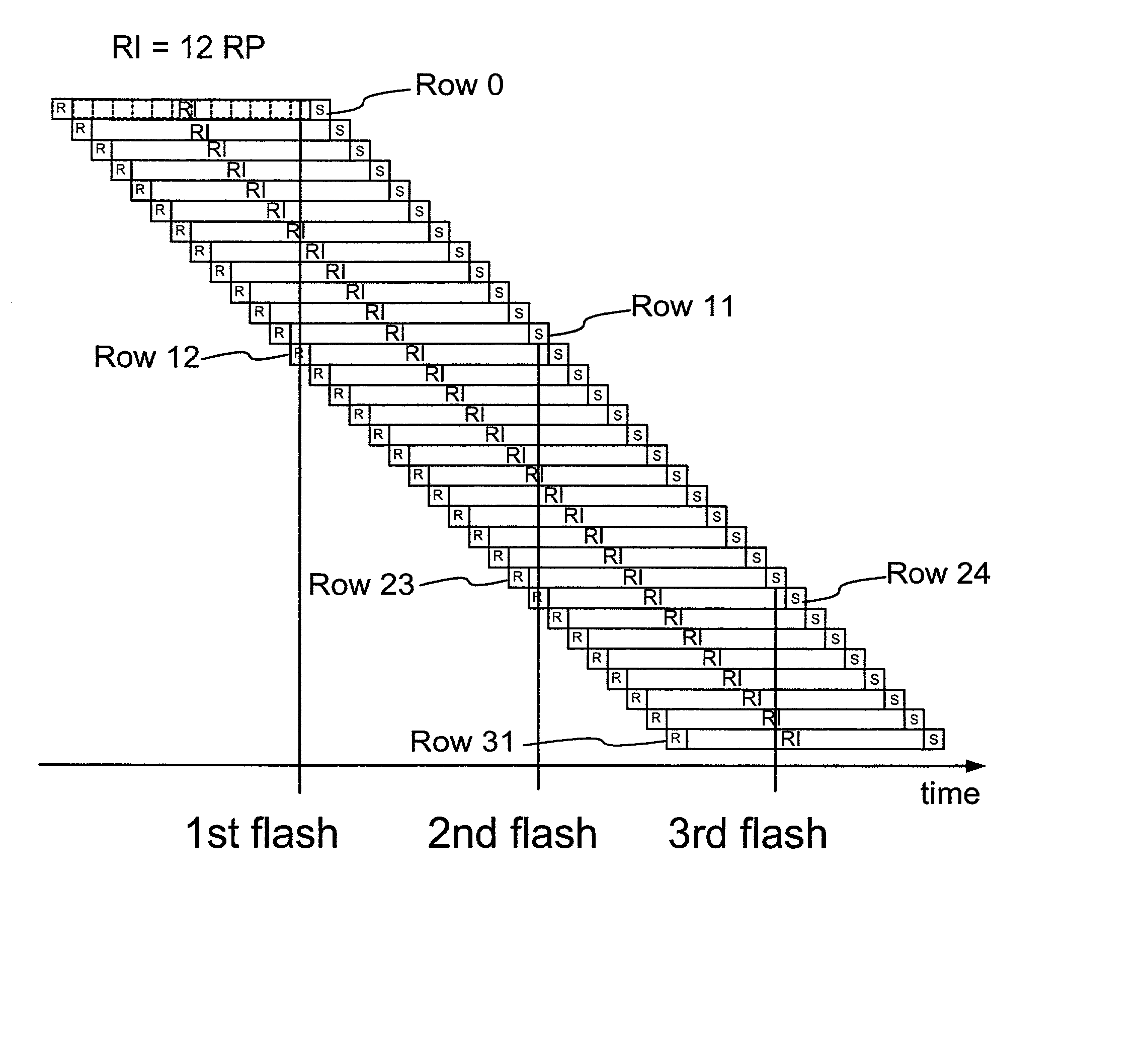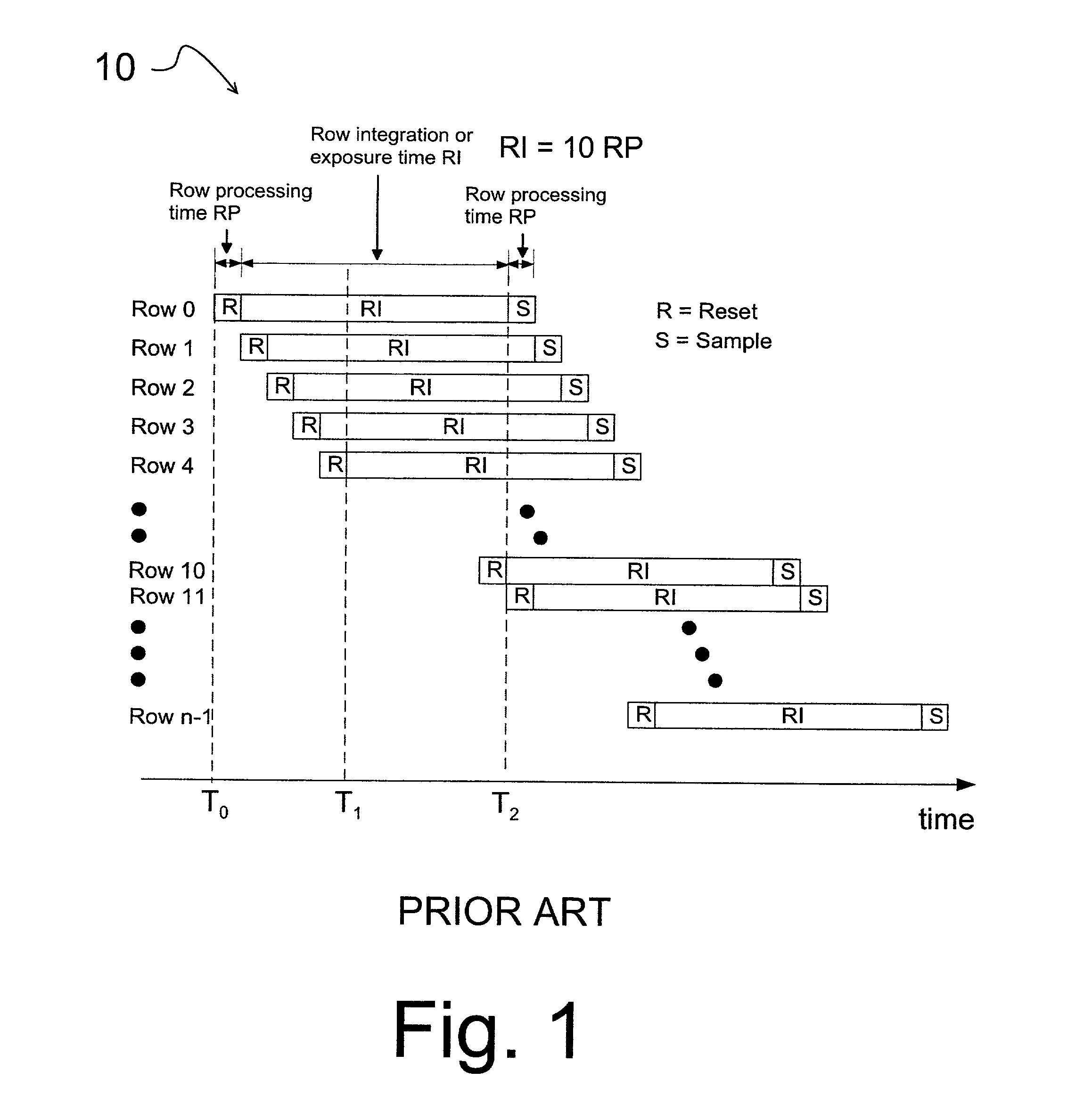Control of a flash unit in a digital camera
a digital camera and control technology, applied in the field of digital camera control, can solve the problems of row-by-row processing, complex sensor structure, and different rows of matrix sensor exposed
- Summary
- Abstract
- Description
- Claims
- Application Information
AI Technical Summary
Problems solved by technology
Method used
Image
Examples
Embodiment Construction
with examples will more clearly illustrate, for anyone skilled in the art, advantageous embodiments of the invention as well as advantages to be achieved with the invention in relation to prior art.
[0031] It should be noted that although, in the following examples, the invention is primarily described in connection with a matrix sensor to be exposed and read in pixel rows, it can also be used in connection with sensors to be processed in columns or in sub-areas in another way.
[0032] In the following, the invention will be described in more detail with reference to the appended drawings, in which
[0033] FIG. 1 illustrates, in principle, how the exposure time of a matrix sensor is controlled when using a rolling electronic shutter known from prior art,
[0034] FIG. 2 shows, in principle, how the flashes of a flashlight according to the invention are timed in connection with a matrix sensor to be processed and exposed row by row as shown in FIG. 1,
[0035] FIG. 3 shows the typical time beha...
PUM
 Login to View More
Login to View More Abstract
Description
Claims
Application Information
 Login to View More
Login to View More - R&D
- Intellectual Property
- Life Sciences
- Materials
- Tech Scout
- Unparalleled Data Quality
- Higher Quality Content
- 60% Fewer Hallucinations
Browse by: Latest US Patents, China's latest patents, Technical Efficacy Thesaurus, Application Domain, Technology Topic, Popular Technical Reports.
© 2025 PatSnap. All rights reserved.Legal|Privacy policy|Modern Slavery Act Transparency Statement|Sitemap|About US| Contact US: help@patsnap.com



